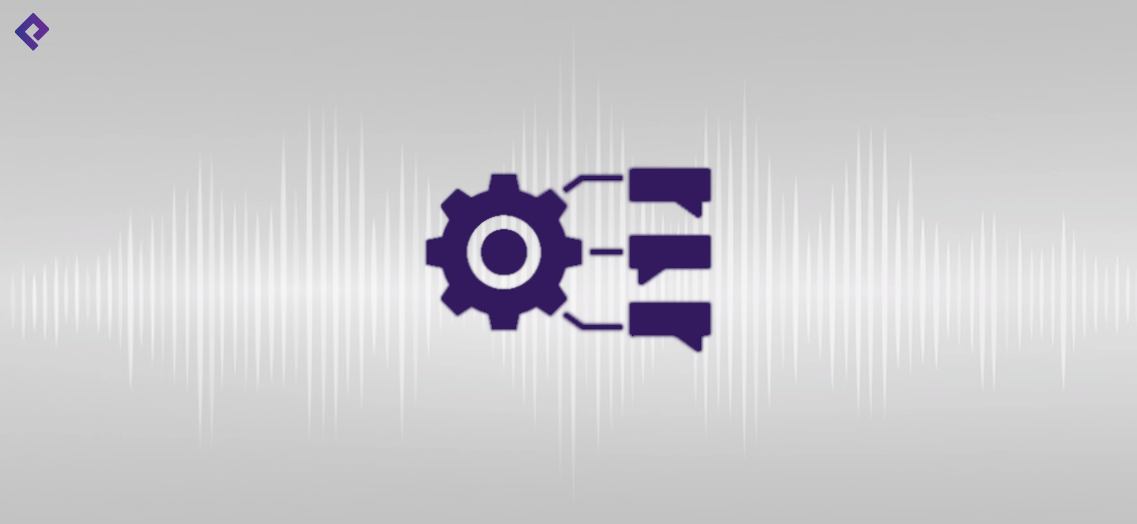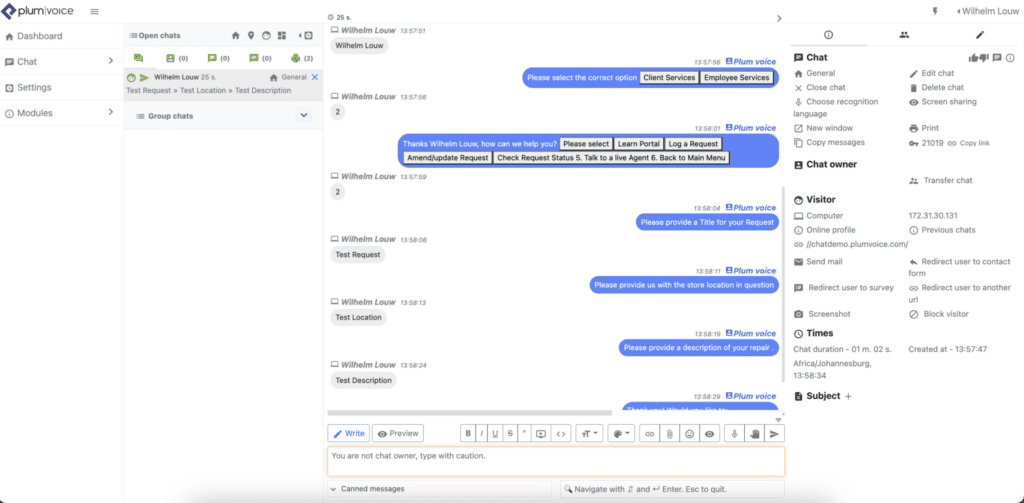

What is NLP?
Natural language processing (NLP) is a subfield of artificial intelligence (AI) based on the interactions between computers and humans. NLP enables machines to understand, interpret, and generate human language in a way that mimics human communication via a chatbot or something similar.
NLP technologies have been around for decades, but advances in machine learning and conversational AI have made NLP even more prevalent and powerful. NLP is used in a variety of applications, including speech recognition, machine translation, sentiment analysis, text classification, conversational AI and more.
How Does Natural Language Processing Work?
One of the challenges in NLP is that human language is incredibly complex and can vary greatly in regards to sentence structure, context of the conversation/communication, and intended meaning. NLP software systems must be built in a way so they are able to understand the context in which words are used, identify the underlying intent of the text, and distinguish between different configurations of words.
To achieve this, NLP uses a combination of rule-based systems, machine learning algorithms, and coded learning models. Rule-based systems are built using linguistic knowledge and heuristics to identify specific patterns in language. Machine learning algorithms use statistical models to learn patterns in language data, while deep learning models use artificial neural networks to automatically identify patterns and make predictions.
Recurrent Neural Networks
Certain natural language processing platform models like recurrent neural networks (RNNs) are coded and trained on vast amounts of text data to identify patterns and trends in the specified language. RNNs have a “memory” component that allows the AI software to capture information from previous steps in the sequence and then use it to automate future inquiries or objectives. The memory component is implemented as a hidden state vector, which needs to be updated frequently at the beginning of the learning process. The hidden state is combined with the current input to produce the output.
NLP Business Software
NLP has revolutionized many industries, such as customer service, finance, and healthcare, by automating tasks previously performed by humans with solutions such as IVR systems, conversational AI, chat bots, voice biometrics and more.
For example, in customer service, NLP chatbots can provide quick and efficient answers to customer queries, freeing up human customer service agents to handle more important and complex tasks. In finance, NLP is used for sentiment analysis and news monitoring to gain insights into market trends and company performance. In healthcare, NLP is used for extracting information from electronic medical records and for classifying medical documents.
NLP Solutions – Use Cases
Natural language processing is a rapidly evolving field that is transforming the way computers interact with humans. With its ability to understand, interpret, and generate human language, NLP is helping to revolutionize many industries and has the potential to create new ones in the future.
Customer Service – Increase Customer Support
A chatbot such as Plum Chat utilize NLP algorithms to understand the intent behind a customer’s message and generate an appropriate response. For example, if a customer sends a message asking for assistance with a product, the chatbot on your website may use NLP to identify the specific product, and also provide information about it. Information such as its features and troubleshooting steps, customer service help and more. A chatbot can also use NLP to identify the customer’s tone and respond in a friendly manner which increases customer satisfaction, and lowers customer frustration. This can significantly improve the customer experience as they get information they need without having to wait for a human customer service representative.
Healthcare – Clinical Documentation Analysis
Patient data is generated daily in hospitals, dentists, pharmacies and clinics. This means hundreds of thousands of electronic medical records (EMRs), lab reports, x-rays, blood reports and more. NLP software can be used to extract relevant information from these stored documents, and transform it into structured data that can be analyzed for insights. For example, NLP software can be used to identify diagnoses, medications, and treatment plans from EMRs. This allows healthcare providers to quickly and accurately access a patient’s medical history. NLP solutions help improve patient outcomes, as well as reduce the time and resources required to manually review and extract information from clinical documents.
Banks – 24×7 Customer Support
Banks are increasingly using chatbot solutions like Plum Chat to provide 24/7 customer support for FAQs and other customer questions such as account information, balances, and making payments. The chatbot uses NLP software to understand a customer’s question and provide an appropriate response.
For example, if a customer needs information about their monthly mortgage payment, the chatbot can use NLP to gather the customers account information and then relay it to the customer in a clear manner without human error. The customer gets a quick and accurate response without having to wait on hold or visit a branch in person.
Chatbots with Plum Chat
Users can optimize conversational AI bots with Plum Chat, and also take advantage of the data collection software from Plum Voice to process chat data and intelligently communicate back to optimize user experience, enhance customer support and increase revenue.



